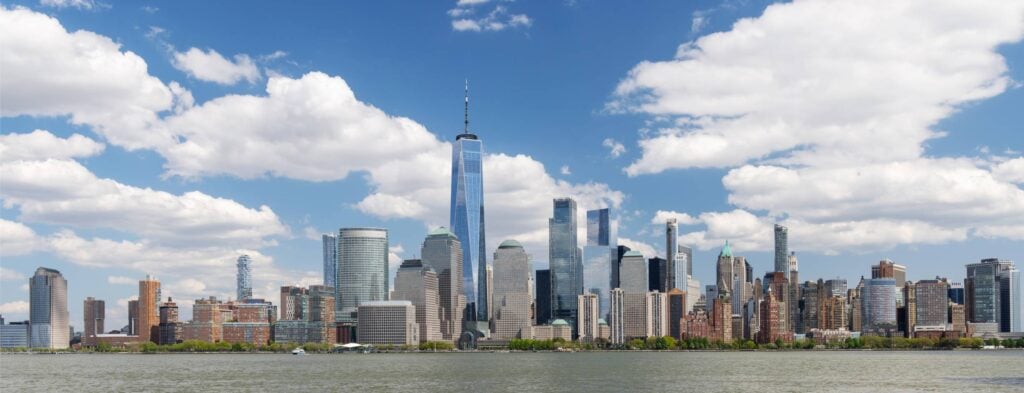
The 9/11 attacks were a horrific tragedy, which left America in shock, confusion, and sorrow. Even more, there was a deep feeling of regret when realizing that many more lives could have been saved if conditions in the world trade center and in airport security had been different. The significant impact this event left on the nation still reverberates today—through awareness of the victims, and widespread changes in domestic security, foreign policy, and societal attitudes.
Additionally, the event left lasting changes on the world of fire & life safety. First responder communication at the time relied on weak personal radio communication. However, this event demonstrated the need for an interoperable communication system between different authorities, departments, and building owners. First responders and occupants also require additional protection against potential dust hazards and air pollution during emergencies. At the same time, building codes have been drastically changed to make escape easier in high-rise buildings. Finally, the event has changed the way we approach public safety, as something that is under constant threat from malicious actors.
Building owners and tenants are now required to have detailed emergency action plans that go beyond traditional fire drills. The NFPA 1660 provides a robust framework on emergency, continuity, and crisis management. To clarify, this code encourages an ongoing process to prevent, mitigate, and respond to incidents that threaten life, property, operations, or the environment. One of the major tenets it suggests is creating a documented crisis management program with a clear scope and goals. This will include the availability of necessary resources, clearly assigning roles in emergency management, risk assessment, and planning procedures for a wide range of emergency situations.

One World Trade Center was a key part in the restoration of Lower Manhattan after the attacks, representing hope and renewal.
Following the events of 9/11, investigations conducted by the National Institute of Standards and Technology (NIST) into the collapse of the twin towers led to recommendations that further influenced building code updates. These changes are focused on structural integrity and fire safety, making buildings more resilient to damage and catastrophic events.
In light of this, the first change involves progressive collapse resistance, which increases the amount of time occupants have to escape. This means that the failure of one structural element will trigger a chain reaction of failures rather than causing immediate collapse. Furthermore, there is now increased emphasis on the fire resistance of important structural components. This includes improved fireproofing materials and ensuring construction materials are durable.
Another obstacle for escape came from the grouping exit staircases in the building’s core. The World Trade Towers had three staircases that allowed for large, open-plan office spaces. However, since they were not separated by a significant distance, they were all destroyed together during the attack. This means that occupants on floors above the impact zone had no viable path for escape.
Following this event, buildings, especially high-rises are designed with redundant exits that are geographically separated, wider stairways, and fire suppression systems. The additional need for low level exit signs that remain visible in smoke-filled environments was also highlighted. Critical safety systems, such as fire pumps and standpipes, are also located in more protected areas of the building to ensure they remain functional during a disaster. In practice, this often means having them located in fire rated rooms, basements, or exit staircases themselves.
Learn more: What Is Passive Fire Protection? >>

A powerful tribute: 2983 names are inscribed on the 9/11 Memorial Pools, located where the Twin Towers once stood.
Today, first responders and frontline workers still suffer from chronic illness caused by debris during the events of the September 11th attacks. Around 149,000 survivors are currently registered to the CDC’s World Trade Center Health Program, which provides medical care to those affected by 9/11.
The dust created by the collapsed towers is dangerously toxic to humans. The majority of collapsed structures were made from pulverized concrete, which is known to cause silicosis upon inhalation. Additionally, many other dispersed substances like asbestos, crystalline silica, lead, and cadmium are carcinogenic or may trigger heart, liver, kidney, or nervous system deterioration. This aftermath of the 9/11 attacks served as a catalyst for a re-evaluation of fire service capabilities, equipment, training, and funding. Through reports and surveys of witnesses and first responders, there was a clear perception of a firefighter’s role from solely a fire fighter to an all-hazards responder. This let to further research and equipment, such as the development of advanced respirators that can withstand a wider range of airborne hazards.
Radios and communication channels between police, firefighters, and emergency medical services could not integrate with each other easily during the disaster. Moreover, land and phone lines were overwhelmed with a high volume of calls, adding to the communication issues during the event. As a result, FirstNet, a broadband communication system, was created to facilitate communication between different emergency service responders. The modern broadband communication systems could work across jurisdictions, so police, fire, and EMS services could communicate and share information with one another.
The tragic lessons of 9/11 taught us that resilience isn’t just about bouncing back; it’s about building stronger and safer communities. When forced to confront our vulnerabilities, we worked hard as a nation to rebuild with a deeper commitment to the safety of every person.
The changes in fire and life safety that followed are a lasting tribute to the lives lost and a testament to the efforts of countless professionals who sought to prevent a similar tragedy. Today, our buildings are designed with more resilient materials and redundant, safer escape routes. Our emergency systems are more integrated, and our first responders are better equipped to protect themselves and others. By remembering the events of September 11th, we honor the victims, and better prepare ourselves for a safer future.